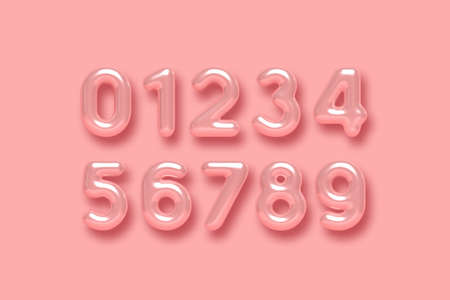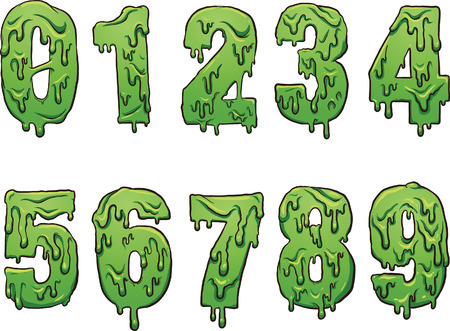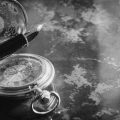Introduction to Crystal Balls in British Occultism
The crystal ball, a symbol long associated with mysticism and divination, holds a unique place within British occultism. Its gleaming surface and enigmatic presence have captured the imagination of both practitioners and the public for centuries. In Britain, the use of crystal balls transcends mere superstition, weaving together threads of folklore, historical tradition, and spiritual inquiry. These objects are not only tools for scrying—gazing into the future or uncovering hidden truths—but also serve as icons of the broader esoteric culture that has flourished across the British Isles. The fascination with crystal balls endures in part because they bridge the gap between ancient beliefs and modern curiosity, inviting both sceptics and believers to peer into their depths. As we delve into their history and significance, it becomes clear that crystal balls are more than ornamental curiosities; they are enduring symbols of the quest for insight within British occult practices.
2. Early Historical Roots: From Antiquity to Medieval Britain
The origins of crystal balls in British occultism can be traced back through a fascinating journey across ancient civilisations and their mystical practices. Long before the crystal ball became a symbol associated with British fortune-telling, crystals were revered by various cultures for their perceived spiritual properties and connection to the divine. In antiquity, particularly among the Greeks and Romans, polished stones—often beryl or quartz—were used as scrying tools to gain insights into the future or communicate with other realms. The practice, known as “crystallomancy,” was not exclusive to Britain but found in many parts of the world, including Persia and Egypt.
As these ancient cultures traded and interacted, their esoteric knowledge gradually made its way into Western Europe. By the early medieval period, crystal gazing had entered Britain, shaped by both continental influences and local folklore. Early British seers often used water-filled bowls, metal mirrors, or even darkened glass before clear quartz spheres became popular. This transition marks an important phase in the evolution of British occult practices.
| Period | Material Used for Scrying | Region/Influence |
|---|---|---|
| Ancient Greece & Rome | Beryl, Quartz Crystals | Mediterranean |
| Persia & Egypt | Polished Stones, Water Surfaces | Middle East & North Africa |
| Early Medieval Britain | Water Bowls, Metal Mirrors | Britain (Continental Influences) |
This table illustrates how materials and methods evolved as divinatory traditions spread and adapted to local resources and beliefs. Notably, it was not until later centuries that spherical crystal balls became widely recognised in Britain. The gradual adoption of these objects reflects both the continuity of ancient wisdom and the unique synthesis of cultural elements within British occultism.

3. Renaissance and Early Modern Period: The Rise of British Scrying
The Renaissance marked a significant turning point in the history of crystal balls within British occultism. During this period, a renewed interest in classical learning and esoteric knowledge swept across Europe, reaching the shores of Britain. It was in this climate that crystal gazing—or scrying—began to gain widespread popularity among scholars and occult practitioners alike. In particular, the use of crystal balls became closely associated with attempts to divine hidden truths and communicate with spiritual entities. Among the most influential figures of this era was Dr John Dee, a mathematician, astrologer, and advisor to Queen Elizabeth I. Dees fascination with the mystical properties of crystals led him to conduct elaborate experiments in scrying, often with the assistance of his medium Edward Kelley. Dee believed that through the use of a polished crystal or “shew-stone,” he could contact angels and receive guidance on matters both political and personal. His detailed diaries, which document these sessions, reveal not only the methods employed but also the cultural significance attached to such practices at the time. Crystal balls thus emerged as essential tools for those seeking insight beyond the material world, cementing their place in British occult tradition during the Renaissance and early modern period.
4. Symbolism and Folklore Around Crystal Balls
Crystal balls have long held a captivating place in the folklore and superstitions of the British Isles, transcending their practical use as divinatory tools to become powerful symbols in local myth. In British tradition, these objects are not merely associated with fortune-telling but are also woven into tales of magical protection, healing, and even mischief. This section explores the rich tapestry of myths, legends, and popular beliefs that surround crystal balls across different regions of Britain.
Folkloric Associations
The symbolism attributed to crystal balls often varies by locality. In Scotland, for example, so-called “seer stones” or “crystal balls” were believed to grant second sight to those who possessed them, a gift reserved for those with an inherited calling. In Cornwall, crystal balls were sometimes used as protective charms against ill-wishing and curses. The following table summarises some of these regional beliefs:
| Region | Local Name | Belief or Legend |
|---|---|---|
| Scotland | Seer Stone | Grants the power of second sight; used by Highland seers (taibhsear) |
| Cornwall | Witch Ball | Protects households from evil spirits and bad luck |
| Yorkshire | Scrying Ball | Used in divination to reveal hidden truths or future events |
| Wales | Cristal Hudol | Associated with healers; believed to focus spiritual energy for curing ailments |
Superstition and Magical Thinking
Apart from specific legends, crystal balls have been surrounded by various superstitions in British society. It was commonly thought that only those born under special circumstances (such as the seventh son of a seventh son) could use a crystal ball without inviting misfortune. There were also warnings against using cracked or clouded spheres, which were believed to attract malevolent forces or bring about confusion rather than clarity. In some rural communities, crystal balls were displayed in windows to deflect envy or the so-called “evil eye.” These customs illustrate how the mystical allure of crystal balls extended far beyond professional occultists and seeped into everyday life.
Cultural Representation in Stories and Art
The enduring image of a wise woman or cunning man gazing into a crystal ball is deeply embedded in British literature and art. From Shakespeare’s witches to Victorian illustrations of fortune tellers at country fairs, the motif recurs as both a symbol of mystery and an object of suspicion. Such depictions have helped crystallise (pun intended) public attitudes towards crystal balls: objects that inspire awe, caution, and sometimes outright scepticism within British culture.
5. Crystal Balls in Contemporary British Occultism
In present-day Britain, crystal balls continue to hold a significant position within occult circles and the wider cultural imagination. While their traditional associations with fortune-telling and divination persist, contemporary practitioners have adapted and reinterpreted their use to suit modern sensibilities. Within established British occult groups—such as Wiccan covens, Druidic circles, and independent esoteric societies—the crystal ball is often employed as a meditative tool, a focal point for scrying, or as part of ritualistic practices designed to enhance intuition or spiritual insight.
The perception of crystal balls among today’s British occultists tends to be pragmatic and experimental rather than solely mystical. Many practitioners approach scrying with an open mind, blending historical methods with personal innovation. The glass sphere serves both as a symbol of tradition and as an object for psychological exploration, often accompanied by journaling or group discussion to interpret visions or impressions received during use.
Popular culture in the UK also plays a vital role in shaping how crystal balls are viewed by the broader public. Media depictions—ranging from classic television programmes to contemporary literature—frequently reinforce the image of the crystal ball as the quintessential tool of the fortune-teller, sometimes tinged with humour or scepticism. However, increased interest in mindfulness and alternative spirituality has led to a resurgence of curiosity about these objects beyond mere novelty.
High street shops specialising in metaphysical goods report steady demand for crystal balls among both seasoned practitioners and newcomers exploring divination for the first time. Workshops on scrying techniques are not uncommon at pagan festivals and esoteric gatherings across Britain, reflecting a lively and evolving engagement with this ancient practice. In online communities, British occultists exchange experiences and advice, demonstrating that the tradition of gazing into the crystal ball remains very much alive—albeit now woven into a fabric of eclectic influences and modern interpretations.
6. Influence on British Popular Culture and Literature
The crystal ball’s enduring image has left an indelible mark on British popular culture, literature, and the wider arts. Throughout centuries, its association with mysticism and the occult has been both reinforced and reimagined across diverse cultural mediums. In classic British literature, crystal balls often serve as a symbol of hidden knowledge or fate; for instance, in Shakespeare’s plays, references to soothsayers and mystical visions evoke the allure of scrying devices. The Victorian era further cemented the crystal balls place in the public imagination, as novels and penny dreadfuls frequently depicted mysterious fortune tellers peering into glass spheres to divine secrets or predict disasters.
In theatre, the motif of the crystal ball became a theatrical shorthand for prophecy and supernatural insight. Productions from pantomimes to serious drama have featured enigmatic characters—often gypsies or cunning folk—offering glimpses into the future with their ever-present glass globes. This trope was not only entertaining but also reflected societal curiosities about fate and destiny prevalent in British society at various historical points.
Moving into the 20th and 21st centuries, British film and television adopted these motifs with enthusiasm. Iconic franchises such as “Harry Potter” introduced crystal balls to new generations, while television series like “Doctor Who” occasionally employed them as symbols of time travel or alternate realities. The imagery is so persistent that the phrase “crystal ball” has become shorthand in everyday speech for prediction or speculation—a testament to its deep-seated cultural resonance.
Moreover, the crystal ball’s presence extends beyond fiction and entertainment into British art, advertising, and even political commentary. Artists have incorporated scrying imagery to comment on uncertainty or to invoke a sense of magical possibility within their work. Adverts might use the crystal ball motif to suggest foresight or wisdom, while editorial cartoons sometimes lampoon politicians attempting to “see the future” through symbolic glass orbs.
Ultimately, the impact of crystal balls within British popular culture and literature is profound. Their recurring appearance signals not just an interest in the supernatural but also a broader fascination with mystery, fate, and knowledge beyond ordinary reach. Whether as literary device, visual icon, or figure of speech, crystal balls continue to reflect—and shape—the cultural landscape of Britain.


